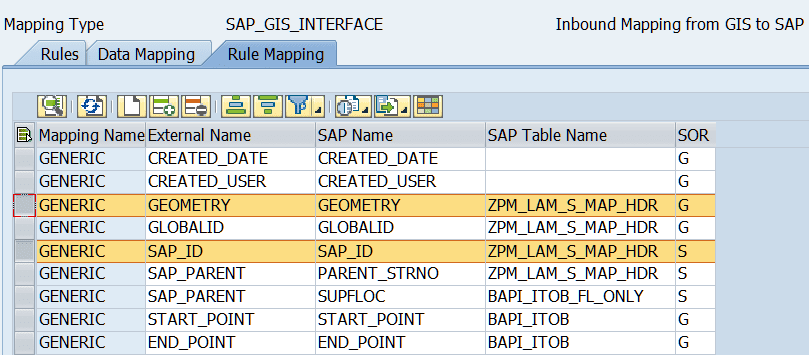Chapters in this Series:
1 | 2 | 3 | 4 | 5 | 6 | 7 | 8 | 9 | 10
This is the third in a series of 10 articles addressing the benefits of integrating a Geographic Information Systems (GIS) system with SAP®.
What is a System of Record?
Almost every customer we work with asks “what is a System of Record?” And “why is it important?
The System of Record (SOR) defines the system responsible for maintaining the true representation or definition of an asset or a portion of the asset for the organization.
Benefits
The SOR is vital in defining the most cost-efficient path for system integration.
For example, a map-based business application like SAP Work Manager should get spatial data from GIS and asset data from SAP without intermediaries. To reduce system complexity, data entry should occur in the SOR and flow out to the end users of the system.
Is It GIS or SAP?
Many companies could say that their system of record is SAP or that their system of record is GIS.
However, there’s not necessarily a way to effectively govern data without an interface that has a) a data transfer mechanism and b) data controls on each side.
Data governance ends up being more dependent on training or people following the business process, but sometimes it’s hard to establish that business process or even enforce it. Even though one system is deemed the system of record, you’re maintaining the data in multiple places.
How an Automated Interface Can Enforce the System of Record
With an interface like Rizing’s Mercury, the opportunity presents itself to enforce the SOR by:
- Identifying the SOR at the individual field level
- Identifying the source system which supplied the data
- Creating/updating fields received from the system of record in other systems
- Hiding fields or making fields uneditable in the non “System of Record” system
- Programmatically enforcing system of record processing
- Capturing interface processing for subsequent audit purposes
Choosing between GIS and SAP
- Both systems may own certain attributes specific to an asset
- In many cases, attributes will overlap across systems
- Currently, SAP trends to be the System of Record for assets
System of Record Scenarios

Identifying and acting on SOR
The following is a portion of a production mapping table for a live GIS to SAP interface, with the “System of Record” indicated in the LAM Owner column (G=GIS, S=SAP).

Every field passed by the interface resides in the mapping table with the SOR field populated. The two highlighted fields are examples of system of record ownership.
GIS Owns
Asset geometry is owned by the GIS system and passed to SAP, where it can be stored in characteristic fields or forwarded to some other GIS reporting system (i.e. GEF). SAP will not be permitted to update the geometry field.
SAP Owns
SAP_ID (i.e. equipment number) is owned by SAP and will never be updated by the GIS system. The interface program must consider the contents of the SOR field prior to creating or altering fields in the respective systems.
If the geometry entry was inadvertently updated in SAP, the next time that record was processed by the interface program, the correct GIS value would be restored. The same would hold true in the reverse direction with the SAP_ID.
Choosing the System of Record
Choosing the System of Record might look simple, but getting it right will require thought and effort.
The process:
- Map the fields by identifying all relevant fields passed by the interface, including any transforms required.
- Mark the ownership column accordingly.
- Make sure the interface takes the ownership column into consideration before creating or updating asset records.
- The System of Record identification now assures the correct data resides in both the SAP and GIS systems.
Master Data Governance
Want a System of Record on steroids? Try master data governance.
A master data governance tool that sits on top of SAP controls where data comes from and what data gets updated from different systems.
It has the capability to control the master data that gets through the interface, making sure it’s standards-compliant, whether that’s system of record, allowed values, etc.
A master data governance tool enforces those records with both automated and manual checks. Ultimately, it keeps the systems in sync while enforcing your business and data standards.
The Goal is Good Data
Regardless of your approach (manual or programmatic) for implementing and enforcing a System of Record strategy, the concept is necessary.
Having a System of Record ensures the true system that owns the data is identified and that safeguards are implemented to assure the data is never compromised.
Chapters in this Series:
1 | 2 | 3 | 4 | 5 | 6 | 7 | 8 | 9 | 10

